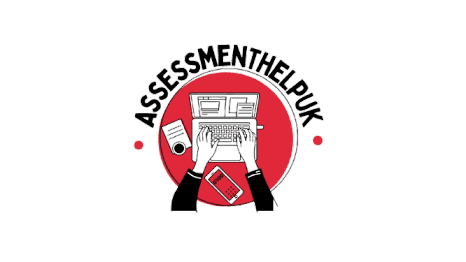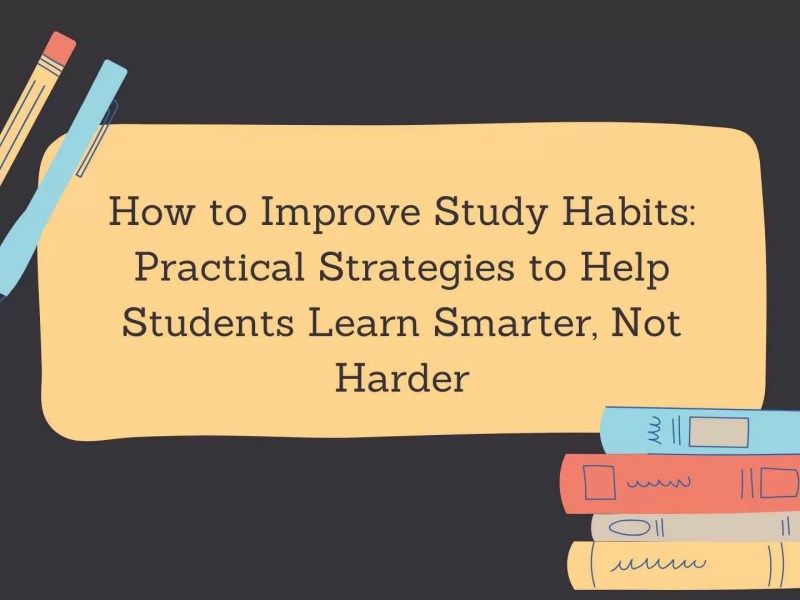There was a time when grades used to be the final word on a student’s ability, a single letter or number that used to define months of learning. But now? Education has gone beyond that. Classrooms are changing, and so is the way we measure achievement. Student performance evaluation is not just about who can memorise facts quickly; it’s about understanding how students process, create, and even practically apply their knowledge in a real-world context.
Most of the modern educators are now shifting from that standard template to a grading system that has a more dynamic approach, reflecting personal growth, skills development, and emotional charge. By combining data analysis, continuous feedback, and real-time feedback methods, schools are starting to measure not just what students used to know, but how they actually learn from it.
In this guide, we will see the modern transformation of student performance evaluation, the tools shaping it, and how today’s teachers are changing the definition of success in a world that values and drives curiosity and capability just as much as test scores.
The Evolution of Student Performance Evaluation
Not too long ago, there was a time when students’ success was judged and measured exclusively through standardised testing and final examinations. These methods reward memorisation and repetition, skills that were valuable, overlooked with creativity, and have enough sustenance for emotional growth.
But as the educational landscape started to change, so did the definition of success. Teachers and researchers started identifying that intelligence isn’t linear. Students demonstrate understanding in many diverse ways, such as through projects, group work, digital media, or discussion-based learning.
Student-centred education
The rise in student-centered education in the late 20th century led to a major shift. Rather than focusing on how well a student could easily recall this information under pressure, modern assessment strategies started to value how students practically applied what they’ve learned. This change was driven by various advances in psychology, learning theory, and technology, which made the way for more holistic and equitable evaluation systems.
Qualitative and quantitative data altogether
These days, students’ performance is an evaluation that fosters quantitative data (such as grades and attendance) with qualitative insights (like feedback, collaboration, and even self-reflection). The goal here is simply to understand the learner as a whole person, not just as a test-taker.
Modern Approaches to Student Performance Evaluation
The way most of the schools and universities assess learning today is much more dynamic than ever before; it’s not just about how much a student can memorise, it’s about how they think, create, collaborate, and practically implement that knowledge. Modern evaluation methods aim to capture such dimensions through a blend of technology, reflection, and practical learning.
1. Formative Assessments: Continuous Learning in Motion
Formative assessments mainly emphasize the student’s developmental growth rather than their final level of achievement; that is, teachers assess students through the process of learning by different activities like class discussions, mini-quizzes, or interactive polls instead of just waiting for the final examination.
This kind of ongoing feedback enables teachers to recognize those moments when a student is finding a certain topic difficult before it becomes a serious problem. It gives students the chance to become co-authors of their learning journey, hence mistakes turning into
(For a deeper dive, see our related blog: Formative vs Summative Assessment.
2. Summative Assessments: Measuring the Final Mastery
While the formative assessments are about measuring growth, like final exams, end-of-unit assessments, or even research papers, this approach has changed over time. Many institutions now design summative projects that combine practical implementation with theoretical understanding, making sure that students can apply what they’ve learned so far in the real world.
For instance, a science course may now incorporate all lab-based experiments or digital presentations, not just the written tests. This mix nurtures an evaluation that reflects multiple skills rather than one-dimensional performance.
3. Performance-Based Assessments: Beyond Traditional Testing
At a time where innovation, performance-based evaluation is peaking up, students are projected on what they can actually do, not what they know about. Imagine that as a presentation, design modeling, prototypes, community project, or even case studies, all requiring students to convert their knowledge into a deliberate and effective action.
Such assessments are examples of the “real world” in which agents are trained for unexpected challenges in their future professional life outside the classroom. The character traits of creativity, collaboration, and resilience are exercised through them; thus, employers and educators are appreciated at the same level
4. Technology-Driven Evaluation: Analytics Meets Education
Let’s not forget the role of digital tools that have redefined student performance evaluation at this point, learning management systems (LMS), AI-based feedback platforms, and data analytics dashboards help to track student engagement and participation in real-time.
Educators now identify trends, like attention span drops during certain lessons or patterns in assignment performance, and make a solution accordingly. Meanwhile, students take advantage of instant insights into their learning through their journey, enabling a sense of accountability and motivation.
The Role of Teachers and Institutions in Modern Evaluation
Modern student evaluation not only depends on technology or framework, but also on the people who actually bring it to life. Teachers, administrators, and policymakers all play a pivotal role in shaping how learning outcomes are shown, defined, measured, and improved.
1. Teachers as Learning Facilitators
Those days are over when teachers were always seen as a means of knowledge. In a classroom of the modern era, they act as learning facilitators, observing how each of the students learns, adapts to every teaching style, and provides feedback that’s timely and constructive.
A teacher’s evaluation strategy now has all the diverse methods, from group reflections and digital portfolios to assessments, making sure that every individual learner’s strengths are known. Their role isn’t just to grade, it’s to enable growth and confidence.
2. Institutional Support for Continuous Improvement
Institutes should equip teachers with the appropriate tools and training so that performance assessment can advance. Schools and universities that put a lot of money into digital tools, assessment literacy seminars, and inclusive grading systems welcome a society of justice and clarity.
Rather than being confined to academic recall, institutions help to guarantee that assessments match with more general educational objectives, including creativity, emotional intelligence, and ethical reasoning. Let’s celebrate this here.
3. Collaboration Between Educators and Students
Institutes should give instructors the right tools and training so that performance assessment can move forward. Schools and colleges that invest heavily in digital tools, assessment literacy workshops, and inclusive grading systems create a just and clear society.
Instead of being restricted to academic recall, universities assist in ensuring that evaluations correspond with broader educational goals, including emotional intelligence, ethical reasoning, and creativity. This is to be commemorated right here.
4. Institutional Data and Policy Integration
At last, contemporary organizations are progressively embracing decisions that are guided by data. They figure out performance metrics, attendance patterns, and engagement data in order to lay out interventions that ostensibly have the primary aim of raising student results, be it through tutoring programs or an early alert system for academic assistance. Evaluation becomes, in essence, the most flexible of systems as it turns into a continuous process of learning, reflecting, and making improvements, which is the result of the alignment of teachers and
Redefining Success: Key Takeaways from Modern Evaluation
One definite truth about education nowadays would be the fact that the very environment which educates us is telling us that the achievement of a learner cannot be gauged by only one examination or test result. Contemporary student performance evaluation is continuous communication, which is the main idea of the dialogue, that acknowledges the mentioned qualities of scholarly rigor to the same extent of growth, inquisitiveness, and practical skills.
The shift from traditional assessment to a holistic method shows a deeper understanding of how students actually learn, adapt, and express themselves. Multiple ways, such as digital portfolios, project-based evaluations, and self-assessments, now allow educators to see a complete 360-degree view of performance that’s more than the four walls of your classroom.
Final words
Student performance evaluation may be considered as an instrument that mainly focuses on the power-sharing aspect with the students. It is a practice that provides them with a just, caring, and reflective atmosphere that enables them to develop their complete potential. Therefore, whatever means is used, be it adaptive learning tools or collaborative rubrics, the objective is always unchanged, that is, to keep learning vibrant, engaging, meaningful, and
As we step ahead, an education system that embraces a modern approach will not only see students perform much better, but they will inspire them to keep on their learning journey on-going even after the grades are forgotten.
FAQs
1.
Evaluation of student performance through different methods aims at measuring academic achievement as well as student growth, effort, and the application of learning in real-life situations.
2. In what way does cutting-edge technology facilitate student performance evaluation?
By using digital platforms, teachers have totally changed the way they can track student progress, give instant feedback, and present performance data for personalized evaluation.
3. What is the role of student performance evaluation in higher education?
Student performance evaluation remains the instrument through which universities can extend the measurement beyond exam performance to include critical thinking, collaboration, and professional readiness.
4. How frequently should student performance evaluations take place?
As a matter of fact, if it were possible, evaluation would take place every day through the term by means of both formative and summative assessments, which would be aimed at continuous improvement.
5. What is the role of feedback in student performance evaluation?
Providing students with helpful feedback not only makes them conscious of their abilities but also guides them to discover the areas where they are lacking, thus, it involves them in motivation and self-regulated learning.
6. How are student performance evaluations and career readiness related?
The current methods of evaluation place a great deal of emphasis on communication, adaptability, and problem-solving, the core skills that are most valued by



